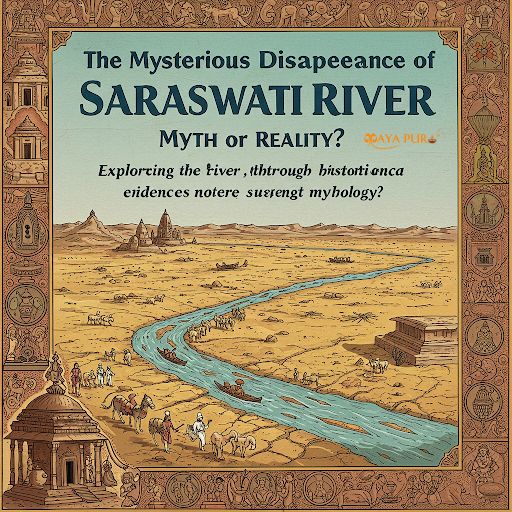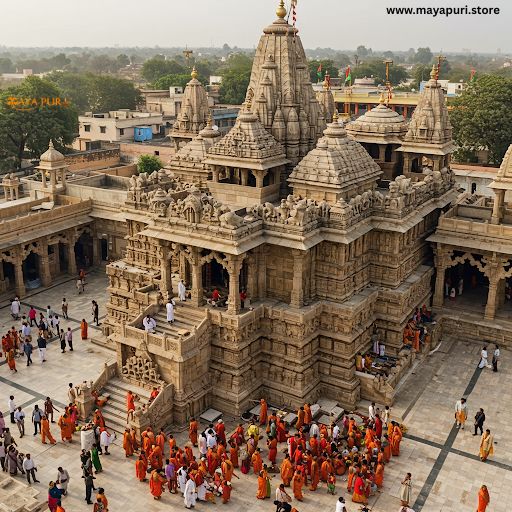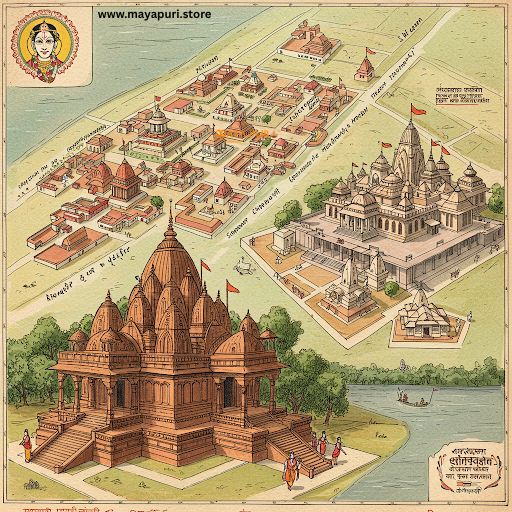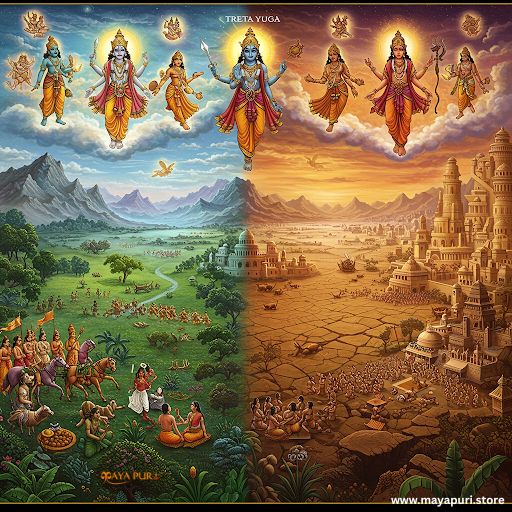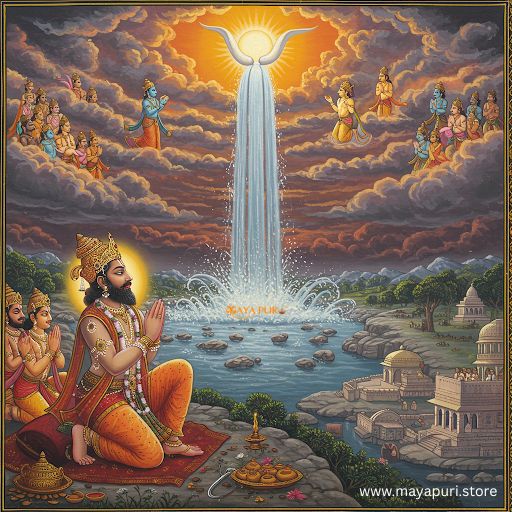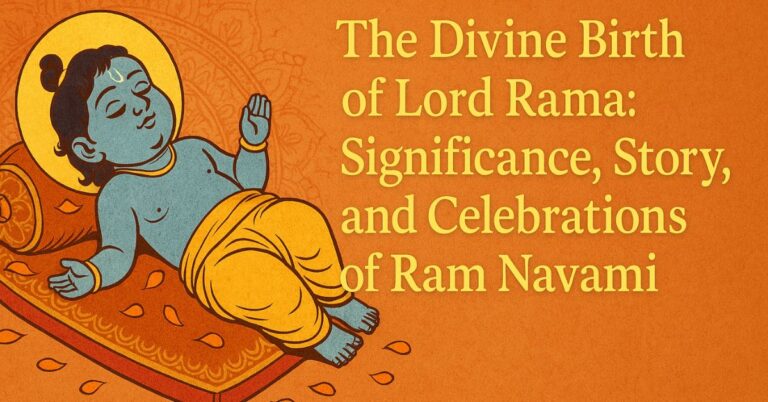The Saraswati River holds a legendary status in Hindu mythology, often described as a mighty and sacred river that once flowed through ancient India. Revered as one of the three rivers in the Triveni Sangam (the confluence of Ganga, Yamuna, and Saraswati), this river has been a subject of fascination, spiritual significance, and mystery for centuries. However, unlike the Ganges and Yamuna, the Saraswati is nowhere to be seen today.
Did this river ever exist, or is it just a mythological tale? If it did exist, where did it disappear? This article delves into the myths, history, and scientific findings surrounding the lost Saraswati River.
Saraswati in Hindu Mythology
The Rigveda, one of the oldest texts in Hindu tradition (dated around 1500 BCE), extensively mentions the Saraswati River. It is described as a mighty, life-giving river that flowed from the Himalayas to the ocean. The Rigveda calls it “the mother of all rivers”, suggesting its immense importance in the Vedic civilization.
In Hindu belief, Saraswati is not just a river but also a goddess of wisdom, learning, and music. Many scholars believe that the river was so revered that it was later deified into the form of Goddess Saraswati.
Mentions of Saraswati in Ancient Texts:
-
The Rigveda praises Saraswati as a powerful river, nurturing civilization.
-
The Mahabharata describes it as a vanishing river, gradually drying up into the desert.
-
The Puranas state that the river once flowed but disappeared due to a curse or natural causes.
These references suggest that Saraswati was once real but mysteriously vanished over time.
Did the Saraswati River Really Exist?
For centuries, many believed Saraswati was purely mythical. However, modern scientific studies, satellite imagery, and geological research indicate that a great river did flow through northwest India in ancient times.

Scientific Evidence Supporting Saraswati’s Existence:
-
Satellite Imagery & Geological Studies
-
Scientists using satellite technology have found dried-up riverbeds matching the descriptions of Saraswati in the Thar Desert region.
-
The course of the river is believed to have stretched from the Himalayas to Rajasthan and Gujarat, eventually flowing into the Arabian Sea.
-
-
Archaeological Findings
-
Excavations at Harappan sites like Rakhigarhi and Kalibangan show that ancient civilizations thrived near the dried Saraswati riverbed.
-
The Indus Valley Civilization is sometimes referred to as the Saraswati-Indus Civilization due to its connection with this lost river.
-
-
Scientific Studies on River Disappearance
-
Researchers suggest that tectonic movements, climate change, and a shift in monsoon patterns caused Saraswati to dry up.
-
Some believe that Saraswati merged underground with the Yamuna or Ganga, explaining why its waters are considered present at the Triveni Sangam in Prayagraj.
-
All these findings strongly suggest that the Saraswati River once existed and supported a great civilization before disappearing due to natural phenomena.
Theories Behind Saraswati’s Disappearance
Several theories attempt to explain what happened to the once-mighty Saraswati River.
1. Geological and Climatic Changes
-
Experts believe that shifting tectonic plates blocked Saraswati’s water sources, causing it to dry up.
-
The decline in monsoon rains over centuries may have further contributed to its disappearance.
2. The River Shifted Underground
-
Some believe Saraswati’s waters went underground and continue to flow beneath the Thar Desert.
-
Ancient texts also mention the river “flowing beneath the earth”, which aligns with the idea of underground water channels.
3. The Curse Theory
-
Hindu mythology suggests that Saraswati was cursed by Sage Utathya for disrupting his rituals, leading to her disappearance.
-
Another story states that Lord Shiva’s anger caused the river to vanish.
While the curse theory remains in the realm of mythology, scientific evidence strongly supports geological and climatic causes behind the disappearance.
The Saraswati River in Modern Times
Despite disappearing from sight, Saraswati has not been forgotten. The Indian government and scientists continue efforts to rediscover and revive the ancient river.

Efforts to Locate and Restore Saraswati:
-
The Indian Space Research Organisation (ISRO) and the Archaeological Survey of India (ASI) have conducted studies to trace the river’s ancient course.
-
Recent groundwater discoveries in Rajasthan and Haryana hint at the presence of an underground water channel resembling Saraswati’s path.
-
There are ongoing projects to revive lost water sources and potentially restore parts of the river.
Spiritual and Cultural Significance of Saraswati
Even though Saraswati no longer flows as a physical river, its cultural and spiritual presence remains strong in Hindu traditions.
-
The Triveni Sangam Connection
-
In Prayagraj, millions of pilgrims visit the Triveni Sangam, where the Ganga, Yamuna, and the “invisible” Saraswati are believed to meet.
-
Devotees believe that taking a dip here washes away sins and grants spiritual purification.
-
-
Worship of Goddess Saraswati
-
Saraswati is worshipped as the goddess of knowledge, arts, and wisdom.
-
Every year, during Vasant Panchami, students and scholars seek her blessings for intelligence and learning.
-
-
Symbol of Purity and Enlightenment
-
The name “Saraswati” itself means “the flowing one”, symbolizing not just a river but also the flow of wisdom and purity.
-
Ancient sages believed that Saraswati nourished not just lands, but also minds and souls.
-
Conclusion: Myth, Reality, or Both?
The Saraswati River remains one of the greatest mysteries of Hindu mythology. While ancient texts describe it as a divine river that vanished, modern science supports the theory that it once existed but dried up due to natural causes.
Yet, even though Saraswati is no longer visible, her legacy continues—both as an underground river and as a goddess of wisdom and knowledge. Whether in mythology, history, or faith, Saraswati remains a powerful force, shaping Hindu culture and spirituality.
So, was Saraswati just a mythical river, or a lost piece of history waiting to be rediscovered? The search for the truth continues.
Final Thoughts
The Saraswati River’s story is a blend of science, mythology, and faith. Whether real or symbolic, Saraswati represents the flow of knowledge, purity, and civilization. What do you think—was Saraswati a lost river, or does she still exist in some form?
Drop your thoughts in the comments below! 😊

